That Useful Wine Site
Search, or just roll your cursor over the colored boxes farther below.click the “x” to dismiss Search-results block.
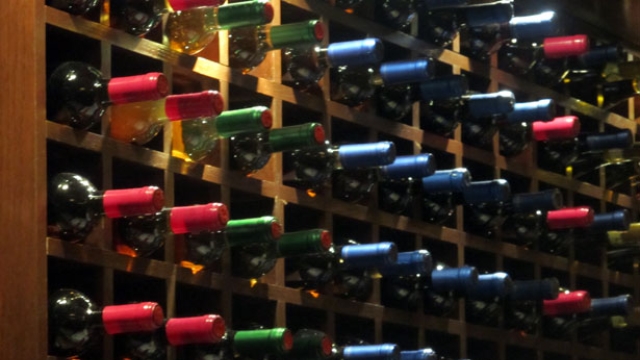
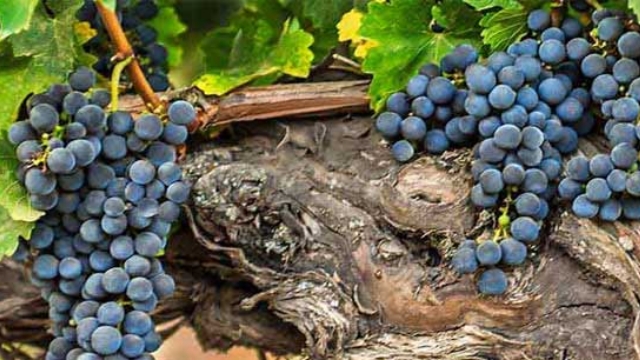
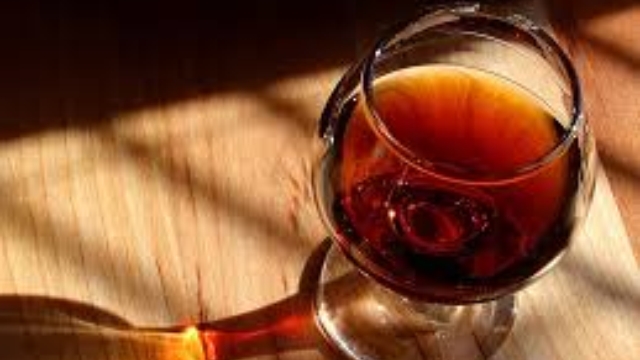
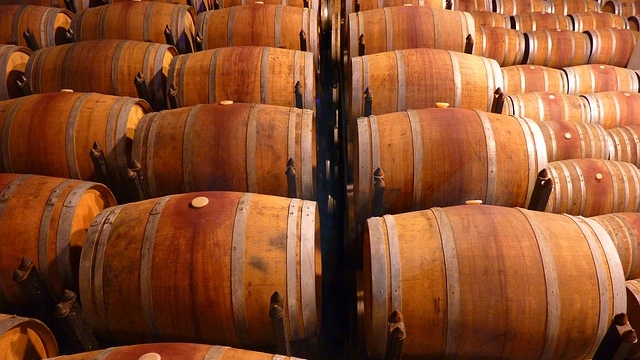
Advertisement:
Advertisement:
Quick page jumps:
(Synonyms: Corvina Comune, Corvina Gentile, Corvina Grossa, Corvina Nostrana, Corvina Reale, Cruina)
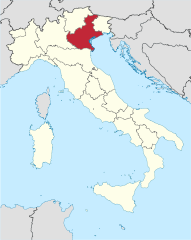
Corvina Veronese (more commonly rendered just Corvina) is a red-wine grape originating in, and still primarily from, the Veneto region of Italy (which is centered on Venice). The grape might be said to live several lives: it makes dry table wines such as Valpolicella and Bardolino; it makes (usually) sweet recioto wines; it makes the high-alcohol Port-like Amarone; and in recent decades it makes Ripasso, a sort of poor man’s Amarone.
Recioto wines are an ancient specialty of the region. Nowadays, they are made by placing the harvested grapes in special drying rooms; the drying-out concentrates the sugars in the grapes before they are then vinified.
Making Ripasso, a relatively new technique, involves adding pomace from the grape skins and seeds left after the fermentation of Recioto or Amarone (or both) to normal Valpolicella, then giving the mix an extended period of maceration. The added material serves as input for the yeasts, producing a wine with a higher-than-normal alcohol content, plus—the desideratum—more tannins, phenolics, and other compounds that augment the wine’s flavor and taste complexity.
Amarone is made from grapes harvested as late as possible to enhance their sugar content then dried (on straw mats) to further concentrate their sugars. They are then vinified using special yeasts that can convert all of their sugar to alcohol, producing wines high in alcohol but also of great complexity and strong flavors. The resultant wine is then aged in oak casks, typically for several years, further adding to its complexity of taste. Amarone is often compared to good Port, but is less sweet. Good specimens of Amarone want up to a decade of bottle age to mature, and some feel that up to twenty more years can further augment them.
In table wines—very much the dominant use of Corvina—the results range from relatively light to medium-bodied, and are typically fairly light in coloration (for a red); they naturally have a high acid content, and often taste out as tart. They are also usually on the low side as to alcohol, often around only 11%, though Valpolicella Superiore bottlings must be at least 12%. Characteristic taste qualities are sour cherry and (perhaps especially) almond. Oak-barrel aging is not common but not rare either. Vinification is usually as a blend, with the Corvina dominant, but monovarietal bottlings can be readily found. Everyday Valpolicella can be rather uninteresting, but Valpolicella Superiore usually shows the grape at its best (ordinary, non-Superiore Valpolicella is sometimes likened to nouveau Beaujolais).
To clarify: Valpolicella table wine can be “ordinary”, which is self-descriptive; “Classico”, which is a small step up and designates a restricted area of origin, the original Valpolicella production zone; or “Classico Superiore”, which marks a major step up in quality—the wine is aged at least one year and has an alcohol content of at least 12 percent (signifying grape quality).
It is important to realize that Valpolicella wines, though usually thought of as Corvina-based, are almost always blends that contain substantial amounts of other varieties, and that mixing is not an arbitrary choice of the winemakers but rather derives from Italy’s complex and—in most opinions—bizarre and often counter-productive wine laws.
More exactly: for Valpolicella DOC wines, Corvina is required to be at least 45% of the total blend, but cannot exceed 95%; moreover, Corvinone grapes (see note below) can substitute up to 50% of the blend, substituting for an equivalent amount of Corvina. Rondinella grapes must constitute at least 5% of the blend, and may constitute up to 30%. Various other, lesser grapes are also allowed, up to a total of 25% of the blend, though no one of those miscellaneous grapes can be more than 10% of the total. Those miscellaneous grapes are Molinara, Oseleta—an old Veronese grape variety experiencing a revival—Rossignola (aka Gropello), Dindarella, Negrara Trentina, Barbera, Sangiovese, and even Cabernet Sauvignon and Cabernet Franc.
(Corvinone is similar enough to Corvina that in past it was often mistaken for a clone; but ampelographical work and DNA profiling have shown it to be a separate variety.)
There will be a quiz in the morning. Pazzo.
Another well-known blend relying on Corvina is Bardolino, which is quite different in character from Valpolicella. In Bardolino, the Corvina grape usually plays a lesser role than in Valpolicella (it can be as little as 35%), and more of the Rondinella, a rather bland grape type, is used. (There is also a Bardolino Superiore, marked by a 1% higher alcohol content and a full year of aging before release.)
Factoid: “Valpolicella” is thought to signify “Valley of (wine) cellars”, though that is not settled knowledge.
Because Ripasso wines are used as table wines, we include them here, presenting some of both classic Valpolicellas and of Ripasso Valpolicellas.
Monovarietal Corvinas come mostly from the Veronese IGT; Valpolicellas, the best-known use of Corvina, are typically blends, though in the better renditions Corvina has the dominant role (see the discussion up this page).
• This wine’s Wine Searcher “Reviews” page.
• This wine’s CellarTracker review pages.
• Retail offers of this wine listed by Wine Searcher.
• Retail offers of this wine listed by 1000 Corks.
• This wine’s Wine Searcher “Reviews” page.
• This wine’s CellarTracker review pages.
• Retail offers of this wine listed by Wine Searcher.
• Retail offers of this wine listed by 1000 Corks.
• This wine’s Wine Searcher “Reviews” page.
• This wine’s CellarTracker review pages.
• Retail offers of this wine listed by Wine Searcher.
• Retail offers of this wine listed by 1000 Corks.
• This wine’s Wine Searcher “Reviews” page.
• This wine’s CellarTracker review pages.
• Retail offers of this wine listed by Wine Searcher.
• Retail offers of this wine listed by 1000 Corks.
• This wine’s Wine Searcher “Reviews” page.
• This wine’s CellarTracker review pages.
• Retail offers of this wine listed by Wine Searcher.
• Retail offers of this wine listed by 1000 Corks.
• This wine’s Wine Searcher “Reviews” page.
• This wine’s CellarTracker review pages.
• Retail offers of this wine listed by Wine Searcher.
• Retail offers of this wine listed by 1000 Corks.
We could find no reasonably available Corvina-based wines better enough than those listed above as to justify a “splurge” price.
Advertisement:
Advertisement:
|
|
This site is one of The Owlcroft Company family of web sites. Please click on the link (or the owl) to see a menu of our other diverse user-friendly, helpful sites. |
|
| (Note: All Owlcroft systems run on Ubuntu Linux and we heartily recommend it to everyone—click on the link for more information). | ||
|
All content copyright © 2024 The Owlcroft Company
(excepting quoted material, which is believed to be Fair Use). |
This web page is strictly compliant with the W3C (World Wide Web Consortium) Extensible HyperText Markup Language (XHTML) Protocol v1.0 (Transitional) and the W3C Cascading Style Sheets (CSS) Protocol v3 — because we care about interoperability. Click on the logos below to test us!
This page was last modified on Saturday, 30 October 2021, at 11:26 pm Pacific Time.
Some Descriptions of Corvina Wines
“Corvina produces light to medium body wines with a light crimson coloring. The grapes’ naturally high acidity can make the wine somewhat tart with a slight, bitter almond note. The finish is sometimes marked with sour cherry notes. In some regions of Valpolicella, producers are using barrel aging to add more structure and complexity to the wine. The small berries of Corvina are low in tannins and color extract.”
“Corvina’s flowery aromas complement punchy sour-cherry and plum flavors, while higher-toned acidity balances out slightly sweet versions. You might taste bitter almonds, leather and chocolate notes, too.”
“Despite its powerful flavors, Corvina is capable of extreme complexity. Bardolino and basic Valpolicella often make medium-bodied fruity wines, whereas the Amarone makers use the Apassimento process. The grapes are dried - usually on straw mats - before fermentation. The shriveled grapes produce intense prune and fig flavors alongside its usual fruit notes. Here, Corvina also makes the region’s sweet wine, Recioto della Valpolicella. Signature Style: Dense, dark black fruit with hints of prune and fig.”
“[W]when vinified as a single varietal Corvina, shows elegance and complexity . . . The wines are light to medium bodied with soft tannins, big cherry flavors, and a mildly nutty finish. Corvina does well when it's aged in wood, which adds depth and structure.”
“The grapes that come from this vine usually yield wines that are red in color but light in flavor. They often have a subtle fruity flavor and may also taste of almond.”
“Although difficult to cultivate, Corvina grapes are highly prized for their high acidity and tart taste. Corvina grapes produce light to medium body wines with a light crimson colouring. Aromas and flavours are light and fragrant, often resembling sour cherries, strawberries and nutty almonds.”
“The grape creates light red colored wines with a light almond aroma. The finishing note is recognized with a tart cherry taste. Winemakers in parts of Valpolicella will use barrel aging to give the taste of the wine more depth.”